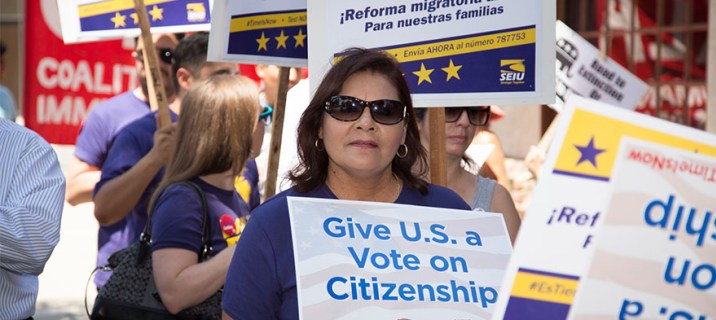As a citizen of Mexico now living in the United States, I have been focusing on how the presidential candidates address Latinos.
Republican candidates seldom speak to the issues of concern to Latinos and rarely engage in any concrete and honest dialogue with us. Meanwhile, Democratic candidates almost seem to step over one another to pledge what they will do for Latinos. They seek the support of Latino elected officials and talk about their commitment to Latino immigrants and individuals without legal status.
Yet candidates from both parties fail to realize Latinos are not single-issue voters. We care about more than immigration.
Many Latinos believe that public education is still marked by institutional racism. Separate schools for Mexicans in Southwestern states, discrimination against hiring Latino teachers and administrators, refusals to offer bilingual education, unequal financing of school districts, schools with high concentrations of Latino students—these are some of the injustices we have endured.
THESE ISSUES GO BEYOND IMMIGRATION.These issues go beyond immigration. They affect those of us who are citizens and legal residents.
A SHIFTING POPULATION
What gets lost is that the demographics of Hispanics are shifting. Increasingly, more Latinos are born in the United States than outside. Over time, we will have even more of a foothold in this country. Thus, immigration cannot be the linchpin in attracting Latino voters.
According to the National Center for Education Statistics, from fall 2002 through fall 2012 the number of Latino students enrolled in schools rose from 8.6 million to 12.1 million students, and our share of public school enrollment increased from 18 to 24 percent.
We’ve seen success over the past decade. The Latino high school dropout rate has dropped from 32 percent in 2000 to 14 percent in 2013.
Our college enrollment rates have more than tripled. But we’re still behind in getting four-year degrees—only 15 percent of Latinos have a bachelor’s degree or higher. By comparison, 40 percent of whites have a bachelor’s degree or higher, 20 percent of Blacks, and 60 percent of Asians.
Our numbers may be on the rise and we may be seeing more educational gains, but this hasn’t quite translated to significant economic growth. Latinos make up 28.1 percent of the more than 45 million needy Americans and 37 percent of the 14.5 million children living in poverty. However, we comprise only 17 percent of all Americans.
Therefore making college affordable for everyone, as Hillary Clinton and Bernie Sanders have promised, will not solve our problems because they arise much earlier with lackluster K-12 schools.
This is why we need to hold public schools accountable, offer school choice to parents and students, and improve teacher preparation. We cannot afford to continue ignoring to do so.
Presidential candidates would be wise to avoid speaking about immigration at the expense of education and many other issues that impact our community—citizens, legal residents and unauthorized immigrants alike.
Credit to Education Post.

